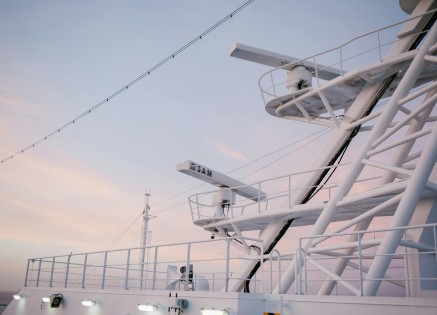Copyright © 2025 lmitac.com All Rights Reserved. Contact - Terms and Conditions - Privacy Policy - Quality Policy - Become an instructor - Vacancies - Sitemap
London Maritime Academy is a trade name for London Premier Groupversion: 2.9.0
London Maritime Academy is a trade name for London Premier Group

Posted on : 1/20/2025, 8:49:26 PM
You're in a store, looking for an organic vegetable sale, and wondering how you can get this royalty-level produce brought from Africa for such a cheap price. Want to know the magic hand behind it all? Reefer ship transportation. With their refrigeration systems and insulated walls, there’s a world of technology constantly evolving to ensure the future of this trade is promising. So, let’s explore the fascinating world of reefer ship transport and their cutting-edge technologies.
A reefer ship is essentially a refrigerated container vessel designed specifically for transporting goods that require consistent temperature control during transit. Unlike conventional cargo ships, which are built to carry dry or standard freight, reefers are equipped with refrigeration units that regulate the temperature within the cargo hold.
What could these ships be used for? What's the actual purpose? We're sure you can think of three reasons from the top of your head, and your reasons are probably right, reefers are used for shipping goods that need to be chilled like frozen food (meat, fish, fruits etc), pharmaceuticals, flowers, and other products that could spoil or lose their quality if they don't maintain specific temperatures during transport.
The technology behind reefer ships is both innovative and highly specialised. At the heart of these vessels is a robust and secure refrigeration system, typically powered by main onboard machinery. These systems work by circulating cold air through the cargo hold, maintaining the desired temperature for hours or even weeks at a time. The most common type of refrigeration used in reefer ships is the "mechanical refrigeration," which relies on a compressor, condenser, and evaporator to cycle refrigerants that absorb and expel heat, keeping the cargoes cool.
One of the key advancements in reefer technology has been the integration of “smart” systems. These special systems enable operators to monitor and control the temperature of individual containers, often via remote connections. This allows for precise temperature management, which is crucial for handling delicate cargo like pharmaceuticals or high-end seafood that requires strict temperature tolerances.
Temperature-controlled shipping is exactly what it sounds like—the transportation of goods where maintaining a constant, specified vessel's temperature is important for the containment of the carried goods.
For global companies and industries dealing in perishable goods, temperature-controlled carriers are an essential part of the supply chain. They ensure that products like vaccines, seafood, and dairy arrive at their destination in the same condition they were in when they were loaded onto the ship.
When sailing at sea, especially for longer times, one fundamental rule of shipping security is guaranteed safe delivery. Any company that wants to ship worldwide should take temperature controlled shipping policy very seriously.

As with many fields in the maritime industry, the world of reefer shipping is constantly evolving. Recent innovations in reefer ship technology are pushing the boundaries of what’s possible, making these vessels even more efficient and effective at keeping goods fresh.
One of the most exciting developments is the advent of "cryogenic" cooling systems. These systems use liquefied gases like nitrogen or carbon dioxide to achieve lower temperatures than traditional mechanical refrigeration systems can provide. Cryogenic cooling is particularly useful for ultra-low temperature storage, such as transporting vaccines or certain kinds of frozen seafood, where temperatures as low as -80°C are required.
Additionally, there has been a growing trend toward the use of renewable energy sources, such as solar panels, to power refrigeration units on reefer ships. This shift not only reduces reliance on traditional fossil fuels but also aligns with the maritime industry’s sustainability goals. Some types of ships now incorporate solar panels on their decks to supplement the energy used for cooling, ensuring a more eco-friendly operation.
Another exciting development is the integration of data analytics and Internet of Things (IoT) technology into reefer ship systems. Using sensors, real-time data can be collected on everything from temperature and humidity to air quality inside the cargo hold. This data is then transmitted to operators, who can make adjustments to the temperature or ventilation remotely if needed. By using this kind of technology, reefer ships are becoming more responsive to changing conditions, ensuring the cargo arrives in optimal condition.
Lastly, the use of blockchain technology in the reefer shipping industry is gaining traction. By creating a transparent, tamper-proof record of a shipment's journey, blockchain ensures that all stakeholders—from the ship owner to the final recipient—have access to verified data on the conditions the goods were transported in. This increases trust in the process and provides better accountability, especially for high-value or sensitive cargo.
If you're considering pursuing a job at a shipping firm or want to take up seatrade, particularly in the field of temperature-controlled shipping, you have to understand the design of reefer ship technology. maritime training academy UK offers courses that focus on the operations, maintenance, and management of refrigerated vessels. These academies provide an exclusive short in-depth training on equipment used in reefer ships, and how to manage all the logistics. Through these courses, you will discover fast how to have a strong grasp over the particulars of this technology.
Reefer ship technology is a major part of ocean trade, and it's only moving forward. It's a great opportunity for anyone looking to expand their business or learn a new trade. So if you find yourself looking into reefer ship technology, don't hesitate to start learning mor about it today.